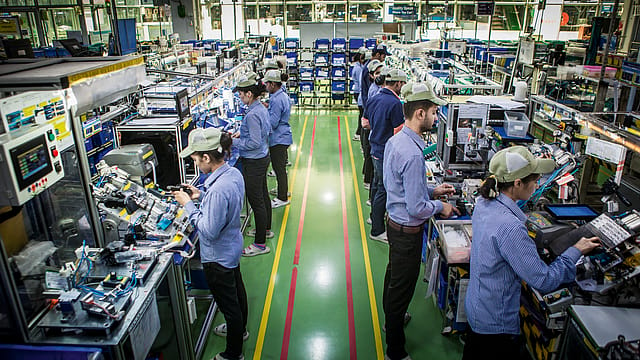Coronavirus and the age of supply chain resilience
ADVERTISEMENT

One of the great affectations of the Industrial Age, or what American economist Jeffery Sachs calls the Anglo-American Age (after the two regions that dominated the world during this time), between 1800-2000 CE, is the idea of the collapse of distance. It does not matter where something is produced, and where it is consumed, what matters is the cost and the price.
This logic underpins all the structures that we have come to call the global supply chain, a series of transactions where sweatshirts produced in sweatshops in Dhaka can be mannequin-ed on demand in New York, and ‘worker-ants’ of the suppliers of Apple can produce parts of a single phone in different parts of the world, assemble it somewhere else, and sell it at a profit of between 60% and 74% (depending on the year).
This supply-and-demand ‘flatness’ has been celebrated in popular culture as the ideal in a ‘global’ economy. The more seamless (and ‘borderless’) this process, the more the supply chain was deemed to be efficient.
The coming of the Coronavirus, originating as it did in China which manufactures one-fifth of the world’s goods, has brought in a new question—global supply chains are cost-effective, but how resilient are they?
December 2025
The annual Fortune 500 India list, the definitive compendium of corporate performance, is out. This year, the cumulative revenue of the Fortune 500 India companies has breached $2 trillion for the first time. Plus, find out which are the Best B-schools in India.
How can companies ensure that a health crisis in one part of the world does not cripple their entire supply chain? How resilient are these supply chains?
The question of supply chain resilience can be addressed in different ways. One way to ensure greater supply chain resilience is to move more manufacturing and assembly close to the headquarters. This, of course, is reversing the nature of the globalisation that we have seen in the past decades, but for some companies this is worth serious consideration.
If this starts to happen in any serious way, then the notion of location will once again become important. Where an object is made—a concept which has lost a lot of meaning barring, say, Swiss watches or French wine which have held on to the logic of terroir—will be priced into the notional value of the object.
But it is important to understand that this is not an easy transition. Businesses have to worry about multiple things before they make this decision—is the labour required available at home, and at the right price, would it increase the price of the object, would customers be willing to pay this premium, and are competitors making such a move, too? It is important to understand that businesses would be reluctant to make geographical transitions unless their competitors are making such moves too. If some do and others don’t, the ones that move back home may not remain very competitive.
In the eventuality that many do change geographies, in some industries at least there might be a corresponding rise in prices. With a corresponding rise in environmental consciousness, we might transition away from the ‘fast fashion, fast food’ age into a time where each item bought is used for a long time and the concept of repair and use comes back into our daily lexicon in a manner not unfamiliar to our parents. Only this time, it would be driven by sustainability and not necessarily want.
Supply chain resilience would also have a political economy resonance. The question businesses would be asking from the China experience with Covid-19 is this—is the nature of the state where their supply chains are based a risk that they have not adequately factored in?
This is a question of information flow. China’s authoritarian system of government meant that details of the Coronavirus took a long time to come out, and even now there are grave doubts about the nature of the data that is coming out of China on how badly it has been affected by the disease.
In comparison, data from the U.S., Spain, Italy, and India are a far better reflection of the impact of the disease in those countries. Democracies have a better, stronger, and more reliable flow of information.
This risk could, and indeed was, ignored for a long time because authoritarian governments were assumed to be able to contain their political problems within their borders and insulate global supply chains from those issues. This was the assumption for countries like Saudi Arabia and certainly it has been the case for China.
But in a world where the risks come from places that cannot be controlled by any border, trustworthy information flows become even more urgent to maintain supply chain resilience.
In this, more than ever India must focus on its ‘democracy premium’. It has both the ability to deliver manufacturing at scale, and by consistently strengthening its democratic institutions, it can assure investors that its information flows are far more legitimate and worthy of trust.
Supply chain resilience is going to the biggest question before businesses in the coming years, and many issues of both sustainability and trust are going to be critical to understand this age of supply chain resilience and benefit from it.
Views are personal.
The author is a historian and a multiple award-winning author.
